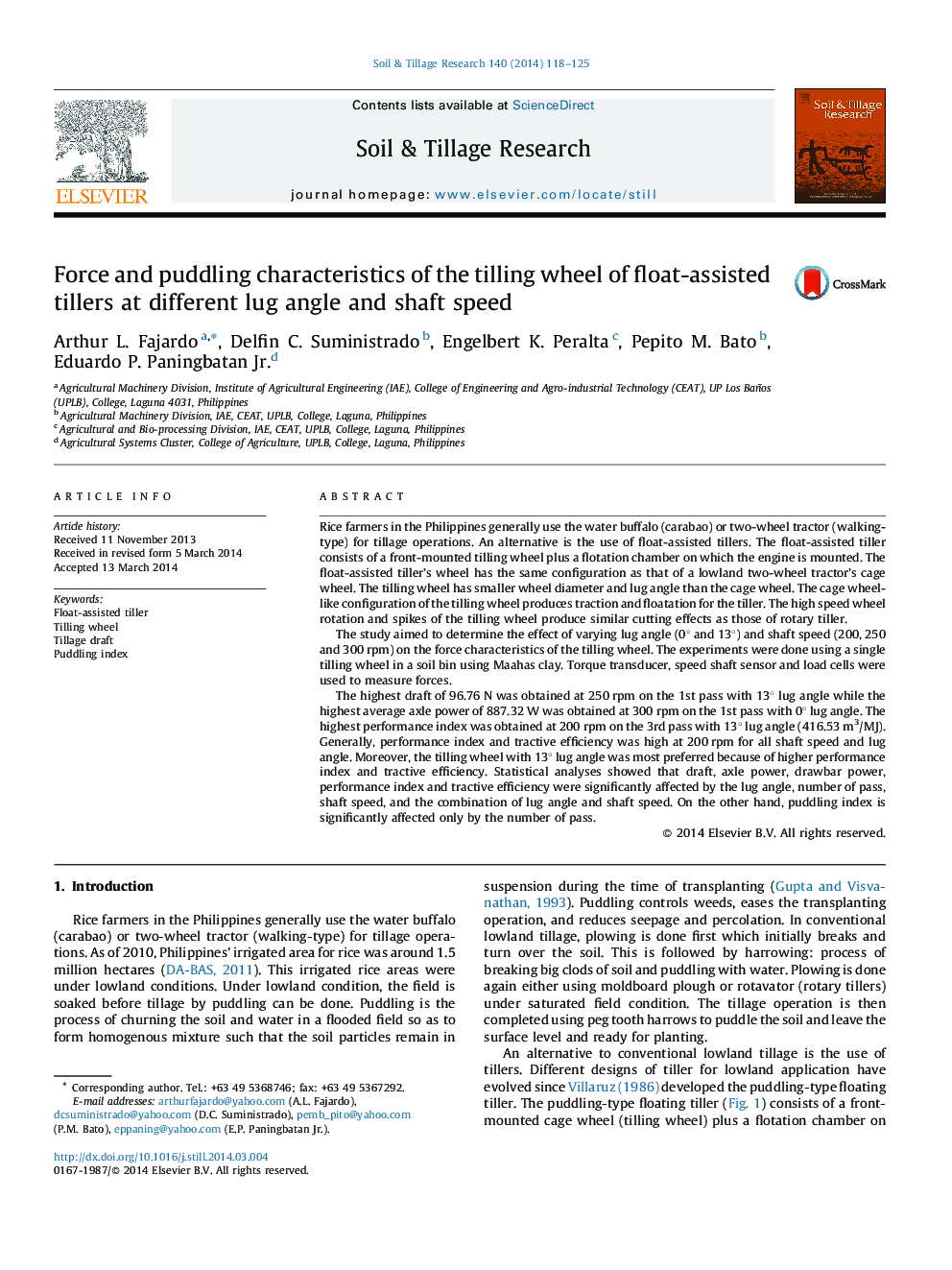| Article ID | Journal | Published Year | Pages | File Type |
|---|---|---|---|---|
| 305751 | Soil and Tillage Research | 2014 | 8 Pages |
•Force and puddling characteristics of a single tilling wheel were determined in a laboratory soil bin.•The tractive efficiency with 13° lug angle was relatively higher than 0° lug angle.•Performance index and puddling index increases with the number of pass.•Forces measured were significantly affected by the lug angle, number of pass and shaft speed.
Rice farmers in the Philippines generally use the water buffalo (carabao) or two-wheel tractor (walking-type) for tillage operations. An alternative is the use of float-assisted tillers. The float-assisted tiller consists of a front-mounted tilling wheel plus a flotation chamber on which the engine is mounted. The float-assisted tiller's wheel has the same configuration as that of a lowland two-wheel tractor's cage wheel. The tilling wheel has smaller wheel diameter and lug angle than the cage wheel. The cage wheel-like configuration of the tilling wheel produces traction and floatation for the tiller. The high speed wheel rotation and spikes of the tilling wheel produce similar cutting effects as those of rotary tiller.The study aimed to determine the effect of varying lug angle (0° and 13°) and shaft speed (200, 250 and 300 rpm) on the force characteristics of the tilling wheel. The experiments were done using a single tilling wheel in a soil bin using Maahas clay. Torque transducer, speed shaft sensor and load cells were used to measure forces.The highest draft of 96.76 N was obtained at 250 rpm on the 1st pass with 13° lug angle while the highest average axle power of 887.32 W was obtained at 300 rpm on the 1st pass with 0° lug angle. The highest performance index was obtained at 200 rpm on the 3rd pass with 13° lug angle (416.53 m3/MJ). Generally, performance index and tractive efficiency was high at 200 rpm for all shaft speed and lug angle. Moreover, the tilling wheel with 13° lug angle was most preferred because of higher performance index and tractive efficiency. Statistical analyses showed that draft, axle power, drawbar power, performance index and tractive efficiency were significantly affected by the lug angle, number of pass, shaft speed, and the combination of lug angle and shaft speed. On the other hand, puddling index is significantly affected only by the number of pass.
